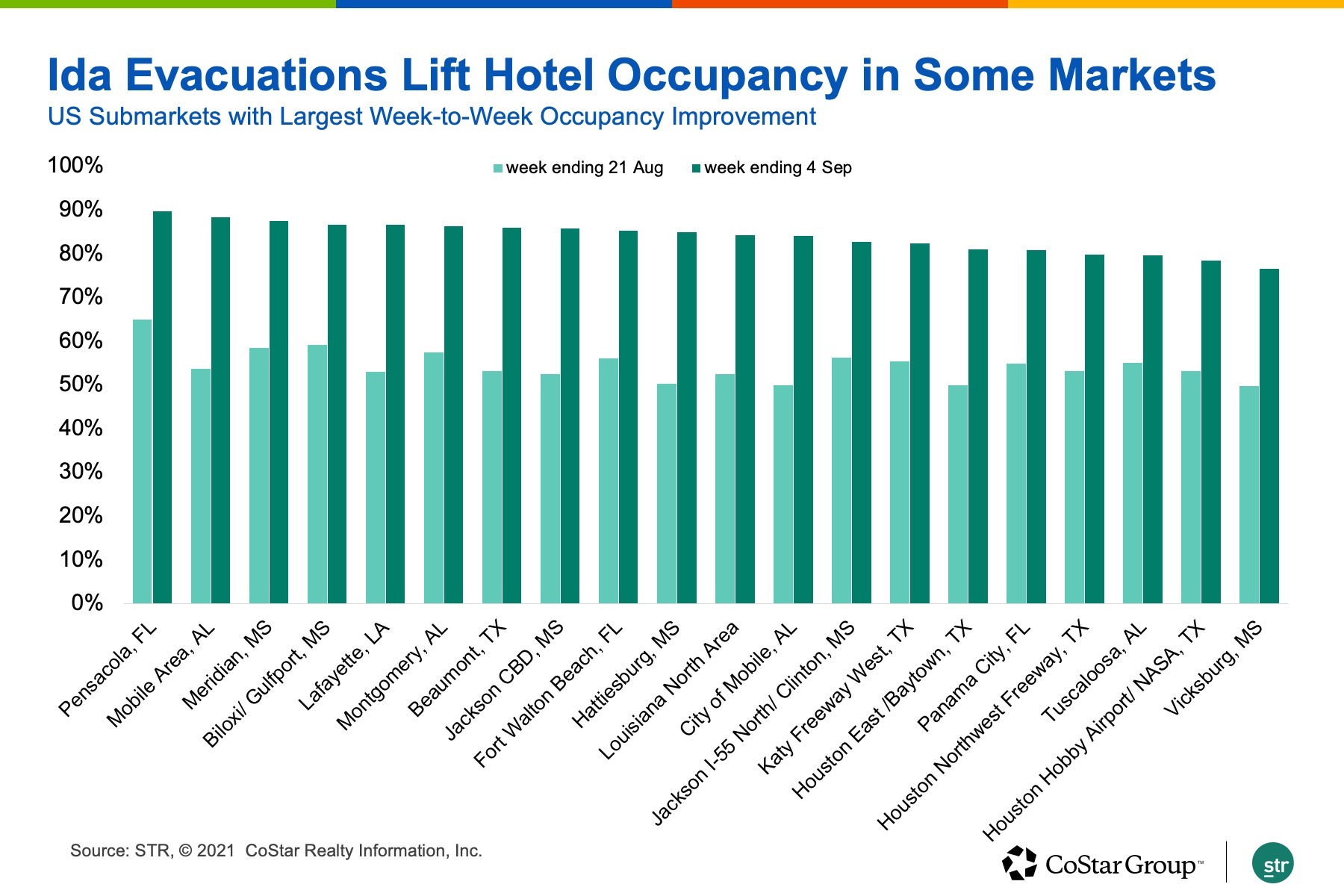Initial data from late August and early September shows Hurricane Ida forced three-quarters of the hotels in New Orleans to close, while evacuees filled hotels all around the Gulf region.
The latest data from STR, CoStar's hospitality analytics firm, showed 155 New Orleans properties closed temporarily, with the majority expected to reopen by the end of October even as the region continues to grapple with power outages and other disruptions from the storms. The temporarily closed hotels make up 75% of STR's reporting sample size for the city in terms of properties and 80% in terms of rooms (28,756). Fifteen properties have announced plans to hold off reopening until 2022, with 41 not yet announcing a reopening date.
In a note to clients, STR analysts cited "power restoration, supplier availability, staffing (and) demand" as primary factors affecting hotels' ability to reopen.
While hotels in the city proper continue to struggle in the wake of the storm, it was a significant demand driver for properties around the Gulf Coast, as evacuees sought shelter in Mississippi, Alabama and northern Louisiana, in particular.

For the week of Aug. 29 through Sept. 4, occupancy spiked significantly following a five-week trend of declining demand as the summer leisure travel season began to wind down and COVID-19 cases spiked with the spread of the delta variant.

Across the U.S., weekend occupancy increased to 77%, surpassing 2019 levels. And while that demand curtailed into the weekdays for most markets, hotels in Mobile, Alabama; Jackson, Mississippi; and northern Louisiana maintain occupancy levels over 75% based on total-room inventory data, which factors in closed hotels.
That demand lift is expected to have some lasting power for Gulf Coast hotels due to the significant damage caused by the storm and as "displaced residents, media, relief workers (and) insurance adjusters" continue to fill rooms, STR noted.
Analysts noted this particular storm has bucked historic trends around major storms in terms of hotel performance.
"A common trend around major storms historically is an initial drop in occupancy for the areas directly affected," the note reads. "In this latest hurricane, however, New Orleans was already at significantly low performance levels because of the pandemic. That meant that hotels that remained open in the New Orleans area saw improved levels of occupancy with guests seeking refuge from their damaged properties, as well as the usual influx of media and relief workers that enter a market once a storm has passed."
The storm's impact on hotels gets murkier as the hurricane's remnant tracked up to New York and the Northeast U.S., in part due to the already strong demand from Labor Day weekend and the reopening of Broadway shows.

Occupancy for New York increased to 80.1% for the holiday weekend. In comparison, Washington, D.C., which was not affected by the storms, reported 68.9% occupancy that same weekend.
Analysts believe any demand lift related to the storm will be much more short term in New York than in the Gulf Coast.
